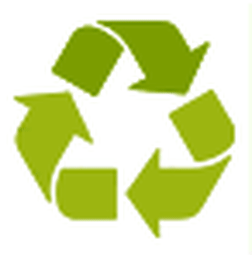Sustainability
The very nature of corrugate lends itself as an
environmentally sound choice.


Corrugated boxes have one of the best recovery and recycling records of any packaging ma-
terial on earth. Over 80% of all manufactured corrugated is being recovered for reuse.
Embracing friendly sustainable packaging solutions aligns squarely with our values to
have a minimum impact on the planets natural ecological system.
The recycled fluted biodegradable structure makes boxes lightweight, reducing shipping
costs.The rigid construction protects the product, reduces waste, pollution, and carbon foot-
prints.
Corrugated products are
printed with water based inks,
making them colorful billboards
for brand identification.

Sustainability is a multifaceted issue.
It’s not just about recycled content or trees saved. It’s not just about what kind of inks or chemicals you
use, or how you dispose of them. It’s not just about workplace safety or philanthropy. It’s not just about
supply chain efficiencies of green initiatives.
It is ALL of these things and more.
Be a Green Designer
- Reduce the trim size. If practical, think of ways to utilize the blank spots on the paper sheet. Modifying your packaging through changes in design and material can alter the dimensions or your weight which ultimately affects freight cost, environmental emissions, and energy use.
- Specify chlorine-free paper, recycled paper or FSC certified new (virgin) papers. Learn how they are manufactured so you can make the optimal choice for each project.
- Think of ways to cut down on the number of structural elements in a mail package or master box (cube utilization)
- For offset printing specify vegetable-formulated ink or water-based flexo ink with soy based resin for printing on corrugated sheets.
- If possible use lighter weight paper; same size- less fiber.
- Develop packaging prototypes, where applicable. Conducting careful testing will help ensure the package is accurately designed for increased product protection with minimal product loss and less resource usage.
- Balance substantiality with function. Less paper, less packaging, less cost.
- Design with proper knowledge of production criteria to produce an economical and sustainable product.
- Ship with companies that utilize clean fuel vehicles (LNG or bio-diesel burners or hybrids) to minimize transportation- related impact.
Contact your Sales Representative if you would like a copy of the Booklet written by John Widera, Chairman of CalBox Group,
titled “Surviving the Environmental Impact of a Paper World”.
Understand risks associated with
corporate responsibility
Risks associated with pollution of
air, water, and land can cost
money. As a corporation, mitiga-
tion of risk is most critical factor
for a cost effective operation. Not
elimination of entire risk. Striking
a good balance between business
and environmental risks is highly
recommended.
Understand customer expectations
Waste reduction, usage of renew-able resources, making products that sustain natural resources, and environment and reduction of Green House Gases are some of the common expectations. How- ever, understanding their empha-
sis and comprehensive expectations make a difference in implementing them.
Design products to meet sustainability
objectives and targets
Designers play a very critical role
in identifying reduction of paper
during product design. Ensuring
materials used in packaging are
made from renewable resouces
and recyclable materials.
That is why we, the Cal Box Group have dedicated ourselves to promote sustainability initiatives utilizing state-of-the-art, low energy machines and facilities. Our employees are trained to reduce waste and our best suppliers also recycle. We all thing Green and Lean.
Paper - A Renewable Resource
From a raw material standpoint, paperboard as a tree product offers a constantly renewable resource.
Today trees are being farmed like crops. Every day, a million trees are planted. That amounts to half
a billion trees each year. We also suspect that most of our forests are now being certified to ensure en-
vironmentally friendly and socially responsible forestation. The use and re-growth of trees in the mod-
ern paper industry is not deforestation. Trees are an important renewable resource for our industry.
We care deeply about ensuring a steady supply as well as a healthy ecosystem. Paper Mills used by
CalBox Group buy from suppliers who practice sustainable forestry, which means the forest is re-
grown as fast, or faster, and then it is cut (FSC Certified). A well managed forest, in which trees are
selectively thinned to allow room for the remaining trees to get ample sunlight, can actually absorb
more CO2 from the atmosphere then in an unmanaged forest. All our elite board people come from
SFI certified sustainable forest and tree farms that have a low carbon footprint.
Paper truly is the only inexpensive, biodegradable packaging material.
98% of the paper waste in all of our 5 plants is automatically collected then sold to recycle-paper mills
to make new paper.
Each of our plants have a water waste treatment system that takes effluent (dirty water) and brings it
up to drinking water quality levels. Any material extracted from the effluent is treated to ensure it is
non-hazardous and safe.
With our state-of-the-art efficient machinery it takes less sheet set-ups, due to less down time. Together
this reduces waste.
We use only press-ready water based inks. Any left-over ink in inventory is recycled to be reused as
new black ink for printing boxes.
